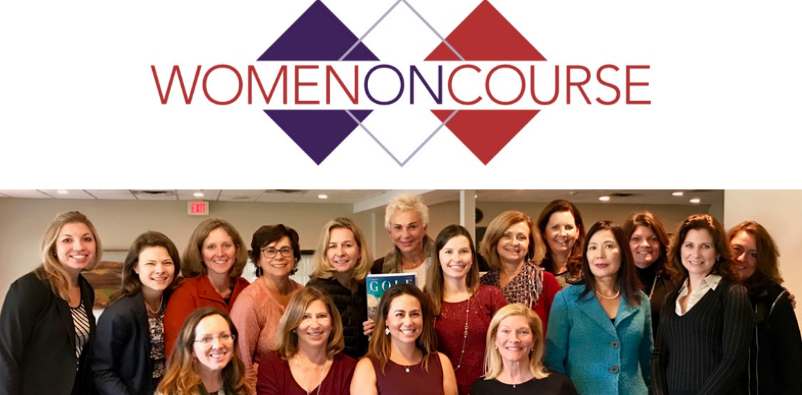It was very exciting this week to head up to Philadelphia and be a part of the first Women on Course and Women in Business joint event – “Perfecting Your Pitch.” We all hear about how to perfect your elevator pitch, but rarely are you in an elevator where you can pitch and let’s face it – a pitch is usually not a one-way discussion unless you are on Shark Tank or you are saying something in passing where you have a limited amount of time and opportunity.
The reality is that a pitch is about increasing the engagement and interest of your audience – typically one person at a time. Many people practice this introduction at networking events, conferences, and definitely at holiday parties. A pitch is a way to articulate your personal brand and what you do in an integrated way – it should likely not be too much about you or too much about your job – it should be the right blend based on your audience.
To assist the attendees at the event this week, I came up with P.I.T.C.H., an approach to remind individuals of the nuances of what makes a pitch memorable and engaging.
The first element is P: Make your pitch personable.
Individuals prefer leaders to logos, or in this case, people to a job title. Although you may share your job title in your pitch, your pitch is the first step to getting people to Know, Like, and Trust you – so think of something about you that is different and memorable. One participant was attending an environmental conference that kicked off that evening. Something unique about her was that she was a chemist turned business development representative and many of the people she would meet at the conference were actually people that she had developed products for as a chemist. That is pretty interesting and not everyone there would be able to say that. It could be you start off by saying how excited you are to meet someone because of how they have impacted you personally.
The second element is I: Be interested to be interesting
Do ask about the other person and be interested in who they are, and what they are doing. A pitch is more like a verbal dance where you have to stay on your toes and adjust your next comment just as you would adjust your next step when dancing. Do continue to share interesting things that might be useful to them and show you are listening and present in the conversation. As an active listening, always think about what they need, what might be able to help them and try to enjoy the conversation.
The third element is T: Tell me about pain points.
Tell them a story, not about your approach but about the pain points you address. It is very important to share what you do for others in ways that include a story that is relatable. It is possible that the person you are speaking with brings up a challenge they are facing and you could empathize and mention you worked with someone around that same question or issue. Opening the door a bit so that the person you are “pitching” to can see themselves in the discussion with explicitly being an example. Meet your audience where they are.
The fourth element is C: Be conversational.
This is how the pitch can be most successful or completely sound inauthentic and rehearsed. People are not interested in hearing your memorized pitch. They want to talk with a person that makes the conversation dynamic, interesting, and approachable. Being conversational means your discussion must be flexible and change as the dialog changes. This is why it is critical to know your value, know your expertise, and be ready to flow with the discussion while also connecting the dots for your audience. Sometimes the best way to be conversational is to ask more questions. Practice this with people you trust who can give you feedback and thoughts. This is a great one to test and experiment with at networking events. Just remember, it is all about the audience.
The final element is H: Help
When talking with someone, my goal is to add value and help them. It could be to make an introduction, or get to a complimentary consult, or just share a tidbit like a book or new podcast they might like. A memorable pitch is supposed to be engaging and worth remembering, we all need to listen and if we can help, even in a small way, do so. Be sure to get their card and make a note of any follow-up steps or things you want to remember about the person when you connect with them the next day.
Building a personal brand around being responsive, engaged, and adding value is a great way to make an important first impression. Remember, it is key to getting people to Know, Like, and Trust you.
Be a noisebreaker, not a noisemaker,
Jen Dalton

